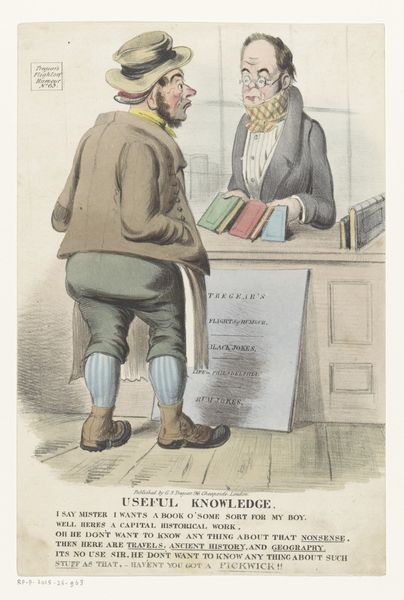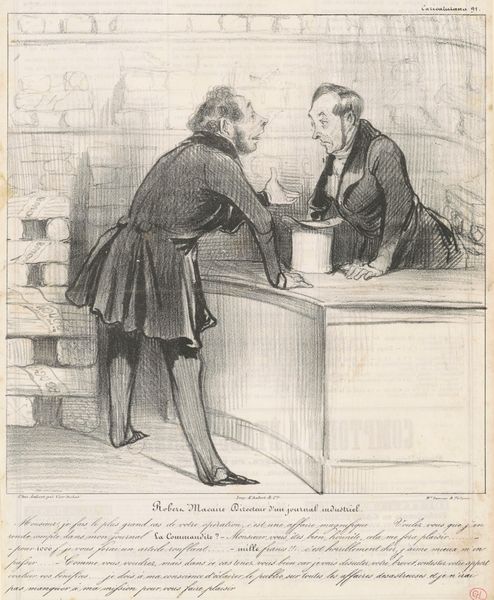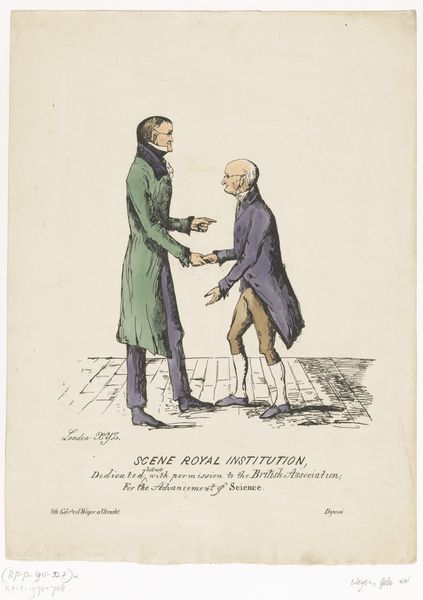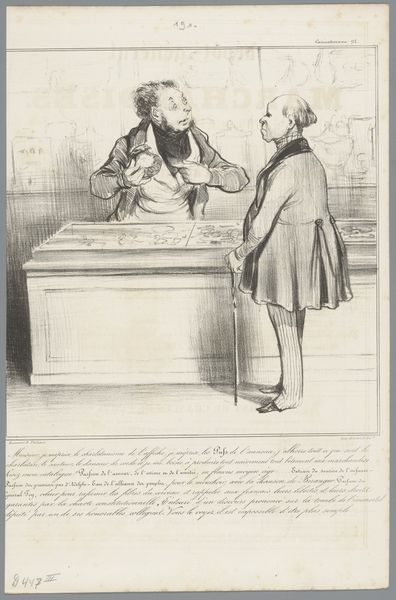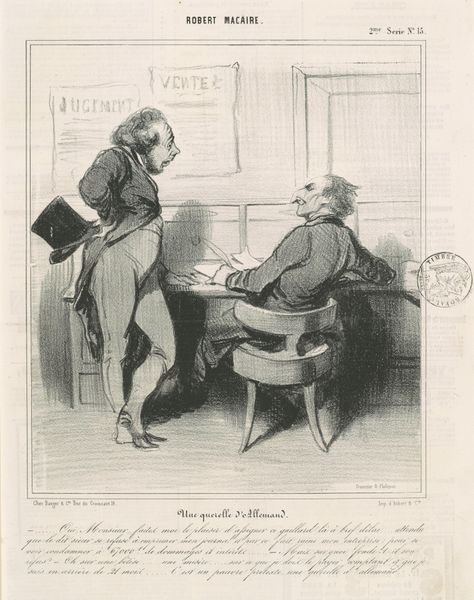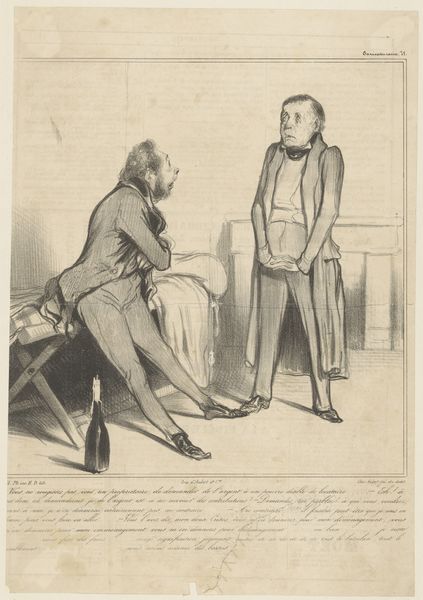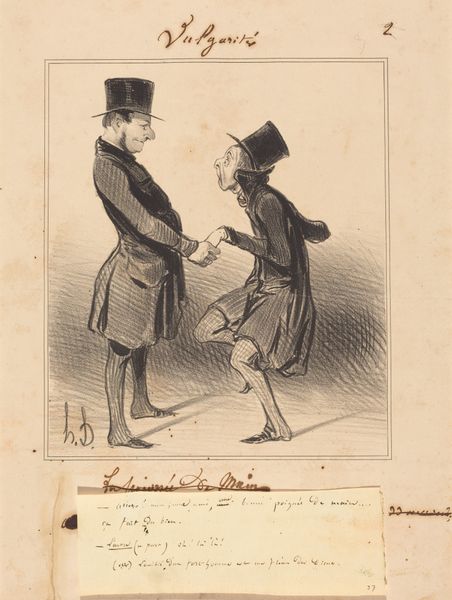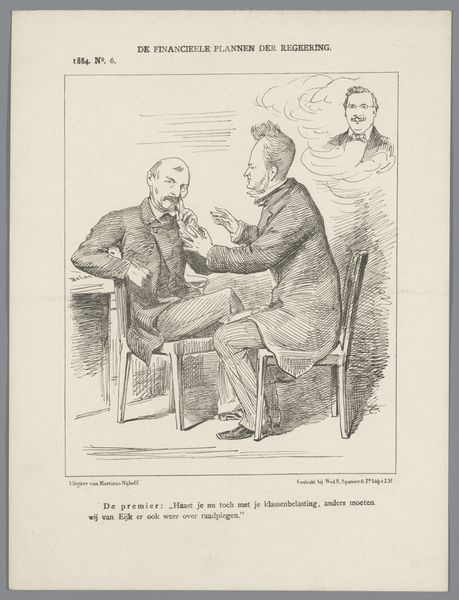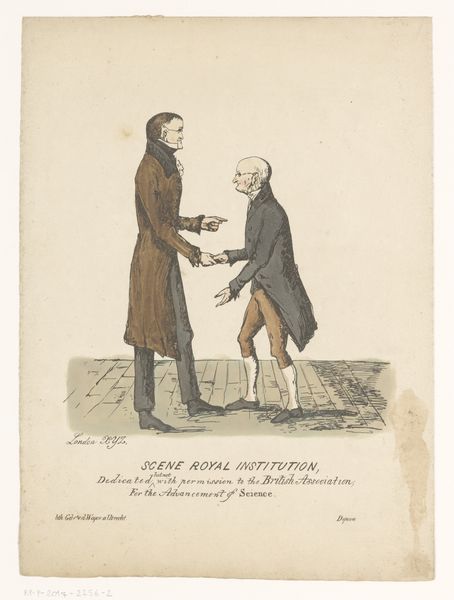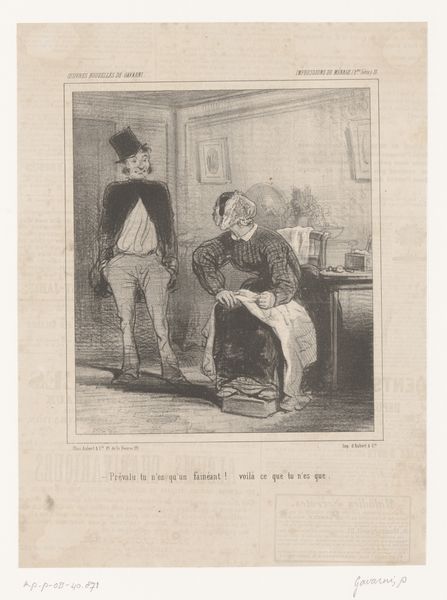
print, etching, watercolor
#
portrait
#
narrative-art
# print
#
etching
#
caricature
#
watercolor
#
romanticism
#
19th century
#
watercolour illustration
#
genre-painting
Dimensions: height 290 mm, width 241 mm
Copyright: Rijks Museum: Open Domain
Curator: Let’s turn our attention to a watercolor etching entitled "Jongeman voor de toonbank van een boekhandel," dating from around 1832-1838. It’s quite charming, wouldn’t you say? Editor: It's immediately striking—and almost unsettling. The stark juxtaposition of the two figures, emphasized by the use of contrasting color palettes, lends an eerie quality. The linear simplicity draws you to the elongated face of the character in green. Curator: Observe how the print employs line and form to convey a caricatured scene. The formal arrangement presents a vertical stacking—the boy, counter, and book, culminating in an almost architectural reading of space and shape. Do you agree that the very distortions communicate a symbolic realm? Editor: I do. I see a tableau deeply embedded in socio-economic anxieties. The boy’s costume marks him as rural or provincial, highlighted against the bookseller’s formal attire, which speaks to the rise of market culture penetrating even rustic life. He says his family needs a "ready reckoner" because they're desperate enough to sell their apple crop prematurely. Apples aren't just apples here; they are emblems of economic hardship and changing times. Curator: The choice of watercolor lends itself well to the tonal variations needed to enhance the caricatural elements. These forms have a distinctly narrative intention that suggests an anecdote or social critique. Notice how the application focuses the light to specific sections, generating contrast to emphasize the grotesque aspect of both characters' profiles. Editor: Absolutely. And it extends beyond mere mockery. This is about anxieties regarding knowledge and commerce. What kind of book promises easy reckoning? It almost feels like a pact, offering superficial mathematical skill as a shortcut. This hints at the broader cultural narrative—of nature at risk and the desperation for commercial success. Curator: Perhaps, ultimately, it is the spatial arrangement, juxtaposed with the symbolic weight of these forms that speaks to a greater underlying cultural truth. Editor: Indeed. Looking at it again through that lens, this apparently simple transaction represents far more—an enduring conflict between naivety and calculated acumen.
Comments
No comments
Be the first to comment and join the conversation on the ultimate creative platform.
